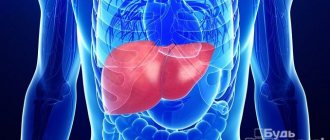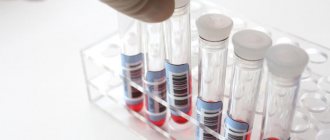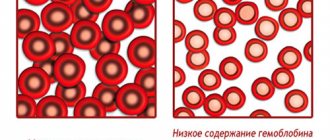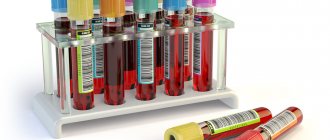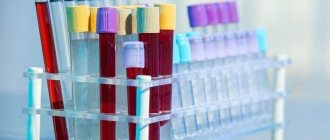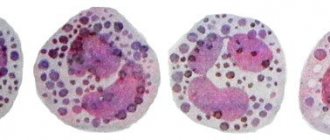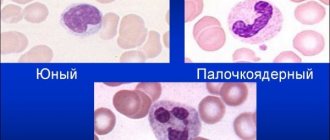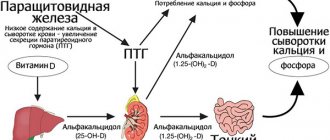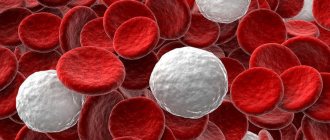What does immunoglobulin g mean? Igg immunoglobulins make up about 75% of serum immunoglobulins and 10-20% of total serum protein. They are produced by mature B lymphocytes. Immunoglobulins g are the main antibodies that are produced upon secondary contact with an antigen. Laboratory assistants do a blood test for immunoglobulin G using the immunoturbidimetric method.
Therapists at the Yusupov Hospital prescribe a blood test for immunoglobulin g to diagnose many diseases. The results of the study are interpreted by professors and doctors of the highest category. All complex cases of disease are discussed at a meeting of the expert council. Immunologists prescribe modern drugs registered in the Russian Federation, which allow normalizing the concentration of immunoglobulin G.
Immunoglobulin g - what is it?
Immunoglobulin G is a combination of proteins in the blood called glycoproteins. These are antibodies that are produced by immune cells as a protective reaction to the introduction of various infectious agents and pathogenic foreign organisms.
Please note: immunoglobulin g is considered the most active among the others, since it is due to it that immunity is formed that is resistant to bacterial and viral flora.
Immunoglobulin G is part of 81% of all serum immunoglobulins; mature group B lymphocytes are responsible for its production.
The half-life of the cells of this IG can range from 22 to 26 days, which is precisely why it actively helps in the fight against various ailments and increases the stability of the immune system.
What to do if there are deviations from the norm
How to normalize antibody levels? If a person has low or high immunoglobulin G, then this is only one of the symptoms of the disease. Therefore, it is necessary to undergo a course of treatment of the underlying pathology. After recovery or stable remission, the IgG level returns to normal.
It is important to remember that low levels of G antibodies lead to a weakening of the body's defenses. Therefore, such patients need to avoid contact with infectious patients and hypothermia.
There are special serums that increase the formation of class G antibodies. However, they are administered to combat a specific pathogen of an infectious disease. This therapy is not used to increase total IgG levels.
If there are deviations from the norm in the test results, doctors usually recommend additional tests. After diagnosis, the patient is prescribed a course of treatment. Therapy methods are selected individually, depending on the type of pathology.
What is immunoglobulin G responsible for?
The level of immunoglobulin g in the blood plasma can help in establishing the clinical picture and making a diagnosis.
As a rule, blood is taken from a vein for laboratory testing using various reagents.
What can this IS show?
- Presence of cancer.
- HIV infection.
- Rubella.
- Allergen.
- Parasites.
- Viruses.
- Bacteria.
- The severity of the inflammatory process.
- Disorders of the lymphatic system.
It is important to follow the rules for blood sampling and conduct research under sterile conditions.
IgG drug
The human body with all its components, including the immune system, is a unique system. It is thanks to it that it is possible to resist foreign organisms. Globulin E, M, A, D, G are components of the immune system that allow the body to exist. If a failure occurs, globulin substitutes are used.
The immunoglobulin fraction is the active substance of normal human globulin. This substance is isolated from donor plasma. It contains neither antibodies to hepatitis C viruses nor immunodeficiency viruses, nor antibiotics. Such medications should only be used as prescribed by a doctor. Like all drugs made from donor blood and plasma, they are quite expensive.
Reasons for decreased IgG
What is immunoglobulin G responsible for?
The main task of immunoglobulin G is the identification of pathogenic organisms and measures for their elimination. These can be various allergens, fungi, viral agents, bacterial flora.
IG protects the body from their harmful effects and prevents the proliferation of harmful microorganisms.
In addition, the following tasks will be performed:
- Phagocytosis is activated.
- A unique combination of protein components is formed at lightning speed, the action of which is aimed at eliminating pathogens.
- During pregnancy, protection is provided not only for the mother, but also for the child, since IgG cells have the ability to penetrate the placental walls.
Good to know: IgG is responsible not only for the immediate protection of the body, but also forms an immune memory that does not allow harmful pathogens to continue to enter the body. In case of previous diseases, such as rubella, chickenpox, measles, it is immunoglobulin G that is responsible for ensuring that the disease is suffered once and that there are no relapses.
Origin of protective proteins
Class G immunoglobulins are highly specific antibodies that are produced by immune cells. The signal for the production of these substances is the emergence of infectious agents in the body - pathogens of bacterial, viral and fungal diseases.
The production of class G immunoglobulins is carried out by mature B-lymphocytes - plasma cells.
Immunoglobulin G is elevated - what does this mean?
If immunoglobulin G levels are higher than normal, this may indicate:
- Exacerbation of a chronic disease, predominance of the inflammatory process.
- Pathologies of the respiratory system occurring in acute form.
- Disturbances in the functioning of the gastrointestinal tract.
- Liver ailments (detection of autoimmune or viral hepatitis, cirrhosis).
- The presence of autoimmune diseases, which include lupus erythematosus, rheumatism, degenerative damage to connective tissue, inflammatory process in connective tissue, repeated damage to cells of the nervous system (multiple sclerosis)).
- Sarcoidosis, which is characterized by damage to internal organs and their tissues by granuloma components.
- Oncology: lymphocytic leukemia, lymphoma, bone marrow tumor, myeloma.
- Severe damage to the organs that are responsible for the secretion of mucus (cystic fibrosis).
- Violations of the integrity of plasma cells (monoclonal gammopathy).
- The presence of infectious mononucleosis, which has a destructive effect on the liver, lymph nodes and spleen.
- Neurosyphilis, in which the infectious agent enters the nerve tissue.
- AIDS.
- The predominance of acute purulent processes in the body.
- The presence of a severe allergic reaction.
To normalize immunoglobulin g, consultation with a specialist and treatment of the identified disease are required.
Reduced IgG
Deficiency of this class of antibodies is detected in the following cases:
- viral diseases in chronic form;
- allergic diseases, including atopic dermatitis;
- deficiency of vitamin B12 in the body;
- chronic inflammatory processes in the large intestine (ulcerative colitis, Crohn's disease);
- human immunodeficiency virus (HIV infection);
- nephrotic syndrome (damage to the glomeruli of the kidneys);
- leukemia (blood cancer);
- surgery to remove the spleen (splenectomy);
- general variable immunodeficiency (a disease in which there is a violation of the production of immunoglobulins);
- Bruton's disease (immunodeficiency due to gene mutation). In this case, there is a congenital deficiency of immunoglobulin G;
- hypogammaglobulinemia (B-lymphocyte deficiency);
- hyper-IgM syndrome (immunoglobulin deficiency caused by a hereditary disorder of the immune system);
- Louis-Bar syndrome (immune T-cell deficiency);
- Wiskott-Aldrich syndrome (a genetically determined recessive disease characterized by the presence of eczema);
- exposure of the patient to ionizing radiation;
- muscular dystrophy (genetic).
Immunoglobulin g – normal
With normal immunoglobulin levels in all groups (IgM, IgA, IgG), you can be sure of the absence of inflammation and the presence of infectious agents. Sometimes tests need to be repeated to confirm the test results.
Below is a table of normal Immunoglobulin G values for different age categories.
| Age category | Normal IG values |
| Babies under 12 months of age | 2.34–4.10 g/l. |
| Children from one to 5 years old | 4.53–9.21 g/l. |
| Group of children 6-10 years old | 5.74–14.76 g/l. |
| From 10 to 16 years old | 6.98–17.13 g/l. |
| Adults | 7–15 g/l. |
Enzyme immunosorbent testing is required to be carried out according to the rules, since this test is intended to determine serious diseases or their absence. Physical and emotional stress may affect the reliability of the readings.
In addition, before the examination, you must stop taking medications and you will need to abstain from eating for at least 4-6 hours.
How is an Immunoglobulin g test done?
Laboratory testing requires blood serum taken from a vein. Tests are prescribed in the morning (before 10 am), the patient is prohibited from eating, and the stomach must be empty. It is acceptable to drink purified, plain water.
Before performing the analysis you should:
- Avoid eating fried, spicy and fatty foods, and also avoid foods that cause surges in blood pressure.
- Do not take alcohol or medications (for example, analgesics).
Immediately before the procedure, stop smoking and excessive physical activity.
It is recommended that the IgG test be performed before the patient begins taking medications. Otherwise, tests will be taken 14 days after stopping medication.
Blood from a vein is donated before ultrasound, x-rays, physiotherapy, etc., so that the results are as accurate as possible.
Indications for IgG testing
The study is prescribed for the following purposes:
- diagnosis of immunodeficiency and determination of its severity;
- assessment of the quality of local immunity and the speed of the immune reaction to the antigen;
- identifying the causes of frequent relapses of chronic, inflammatory and infectious diseases;
- assessment of the state of the immune system when diagnosing autoimmune diseases (immune failure when the body begins to destroy its own healthy cells);
- determination of blood composition in the diagnosis of hematological diseases;
- screening (mandatory examination) for oncology;
- assessment of the effectiveness of immunoglobulin replacement therapy;
- monitoring the course of myeloma (tumor of the B-lymphocyte system) by IgG type during treatment.
Test results are interpreted by an immunologist, oncologist, hepatologist, neurologist, infectious disease specialist and general practitioners (general practitioner, pediatrician, etc.).
Scheme and structure of the immunoglobulin g molecule
Immunoglobulin G is produced in the main hematopoietic organ. The molecular structure of IGg has four polypeptide chains:
- The first two contain a total of 880 amino acids, which are divided equally into each. These are considered heavy chains.
- The second pair has 440 amino acid enzymes in total, which are also divided into equal parts. Such chains are considered light.
All four formations are connected by separate combinations and their functioning is interconnected, which is why they are considered monomers.
What to do if immunoglobulin G is elevated in a child?
Experts note that in the first six months after birth, this indicator may be reduced in babies. Parents should not panic, as this is due to the physiological characteristics of the body and the imperfection of the immune system; as the year progresses, the situation usually returns to normal.
However, if a decrease in IgG is detected in a child who has reached 12 months or more, then we can talk about:
- The presence of a neoplasm in the lymphatic system.
- Muscular dystrophy.
- Severe loss of proteins (often occurs with burns, dermatitis).
- Radiation disease.
- Immunodeficiency.
- Vitamin B12 deficiency.
- Impaired functioning of the kidneys or liver.
What measures to take?
First of all, the pediatrician should refer the baby to the appropriate specialist (after identifying the disease). Only a competent doctor can prescribe treatment aimed at eliminating the cause of the decrease in IgG.
Causes of elevated immunoglobulin
A sharp increase in immunoglobulin g is observed in children with:
- Chicken pox.
- Whooping cough.
- Scarlet fever.
- Meningococcal infection.
- Mumps.
- Pneumonia.
- Bronchitis.
- Diphtheria.
- Corey.
- Adenovirus infection.
- Rheumatism.
- Lymphocytic leukemia.
What should parents do?
Consultation with a specialist will help identify the cause of the increase in IG. After examination and medical history, the doctor will prescribe appropriate treatment. In case of acute infectious and viral diseases, a small patient may require hospitalization.
Indications
In what cases can a doctor prescribe an immunoglobulin G test? There are the following indications for this study:
- frequent relapses of infectious and inflammatory diseases;
- autoimmune pathologies;
- immunodeficiency states;
- suspicion of malignant tumors;
- allergic reactions;
- hematological diseases;
- multiple myeloma;
- assessment of the results of therapy with immunoglobulin drugs.
To find out the level of class G antibodies, you need to take a special blood test. This test shows the state of the body's defense system and the activity of immune proteins.
Immunoglobulin g for allergies
Immunoglobulin G reacts most strongly to food allergies. Allergens can include chicken eggs, dairy products, wheat, soy, fish, nuts, and beans.
When the allergen enters the body for too long, an IgG reaction begins. The allergic reaction becomes delayed, slightly slower.
Allergic spots
The most obvious manifestations are:
- Rash.
- Severe itching.
Babies develop colic, bowel movements, and flatulence. The most dangerous reaction to an allergy can be anaphylactic shock, which sometimes leads to death.
Experts strongly advise against self-treatment and regulation of immunoglobulin levels in the blood. Only a competent doctor will help bring your indicators back to normal and improve your well-being.
What it is
Immunoglobulins (Ig) are protein compounds that are formed when a foreign agent (antigen) enters the body. Otherwise they are called antibodies. These substances are necessary to form an immune response and fight the disease. There are 5 classes of such proteins:
- A (IgA).
- G (IgG).
- M (IgM).
- E (IgE).
- D (IgD).
Each group of antibodies is responsible for a specific immune response. When an antigen enters the body, the proteins IgE and IgM are first produced. They are trying to destroy an alien agent. After a few days, class G immunoglobulins begin to form in the body. These antibodies are produced by special cells - lymphocytes. They continue to fight the antigen. IgG is found not only in the blood, but also in tissues.
Immunoglobulins G are the largest group of protective proteins. They make up 70% of all antibodies. IgG proteins remain in the body for quite a long period. They are able to “remember” a foreign antigen and quickly destroy it when it re-enters the body. Therefore, after some infections a person has a strong immunity. This is the basis for the action of most vaccines.

